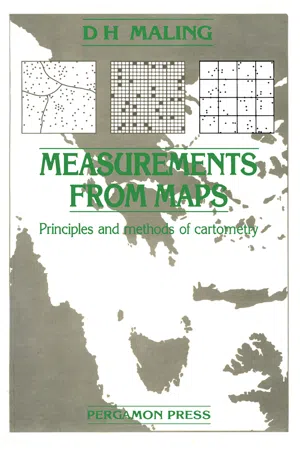Geography
Sample Size
Sample size refers to the number of observations or individuals included in a research study or survey. In geography, sample size is crucial for ensuring the reliability and representativeness of data collected from a specific geographic area. A larger sample size generally leads to more accurate and generalizable results, while a smaller sample size may introduce more variability and potential bias.
Written by Perlego with AI-assistance
Related key terms
1 of 5
6 Key excerpts on "Sample Size"
- eBook - ePub
Sampling Essentials
Practical Guidelines for Making Sampling Choices
- Johnnie Daniel(Author)
- 2011(Publication Date)
- SAGE Publications, Inc(Publisher)
The rule of homogeneity holds that the more homogeneous the population, the fewer elements are necessary to represent the population. If a population is perfectly homogeneous in terms of the study variables, only one element would be necessary to have a representative sample. Inferences based on homogeneous samples have smaller margins of error than inferences based on heterogeneous samples. It is not unusual for a research project to have multiple key variables with differing variances. In such a situation, one should choose the Sample Size based on the variable for which the greatest precision is required.Guideline 7.5. Spatial distribution of the population. Due to the relationship between the spatial distribution of the population and data collection costs, the more scattered a population, the more consideration should be given to choosing a smaller sample rather than a larger sample. The spatial distribution of a population significantly affects the data collection costs of a study; as a result, the spatial distribution of the population is a critical factor in determining Sample Size. Given availability of funds, a larger sample may not be an option in studying a widely dispersed population. Using cluster sampling may reduce such costs. However, as noted earlier, cluster sampling would yield higher sampling errors, necessitating the sampling of a larger number of clusters and a larger overall Sample Size.Availability of Resources
Guideline 7.6. Availability of resources. The more limited one’s resources (i.e., money, time, facilities, personnel, etc.), the more consideration should be given to choosing a smaller sample rather than a larger sample. The number of elements selected for a research project will primarily be determined by the availability of resources. There is a direct relationship between amount of money, time, facilities, and personnel available to conduct a study and Sample Size. It will be a waste of effort to identify a large number of elements for participation in the study if one does not have the facilities, personnel, and other resources to involve them in the study. If immediate results are required, a large Sample Size may be out of the question. There must be a balance between resources and Sample Size. Using only budget considerations, the Sample Size may be determined by dividing the available funds for data collection by the average data collection cost per element. - eBook - PDF
Research Methods For Business
A Skill Building Approach
- Uma Sekaran, Roger Bougie(Authors)
- 2016(Publication Date)
- Wiley(Publisher)
If 500 pieces of machinery are to be approved after inspecting a few, there will be 500 elements in this population. Incidentally, the census is a count of all elements in the human population. Sample A sample is a subset of the population. It comprises some members selected from it. In other words, some, but not all, elements of the population form the sample. If 200 members are drawn from a population of 1000 blue‐ collar workers, these 200 members form the sample for the study. That is, from a study of these 200 members, the researcher will draw conclusions about the entire population of 1000 blue‐collar workers. Likewise, if there are 145 in‐patients in a hospital and 40 of them are to be surveyed by the hospital administrator to assess their level of satisfaction with the treatment received, then these 40 members will be the sample. A sample is thus a subgroup or subset of the population. By studying the sample, the researcher should be able to draw conclusions that are generalizable to the population of interest. Sampling unit The sampling unit is the element or set of elements that is available for selection in some stage of the sampling process. Examples of sampling units in a multistage sample are city blocks, households, and individuals within the households. Subject A subject is a single member of the sample, just as an element is a single member of the population. If 200 mem- bers from the total population of 1000 blue‐collar workers form the sample for the study, then each blue‐collar worker in the sample is a subject. As another example, if a sample of 50 machines from a total of 500 machines is to be inspected, then every one of the 50 machines is a subject, just as every single machine in the total popula- tion of 500 machines is an element. SAMPLE DATA AND POPULATION VALUES When we sample, the sampling units (employees, consumers, and the like) provide us with responses. - eBook - ePub
Doing Real Research
A Practical Guide to Social Research
- Eric Jensen, Charles Laurie(Authors)
- 2016(Publication Date)
- SAGE Publications Ltd(Publisher)
Quantitative research involves applying inferential statistics to your sample in order to make generalizations about your population as a whole. Often, the goal is to describe your population’s characteristics. To support quantitative knowledge claims, your sampling technique should be:- Robust. It should be carried out in ways that are consistent, well justified and clearly spelled out in advance, as well as in the methods section of your research report.
- Objective. It should not be dictated by the personal views or pre-existing assumptions of the researcher.
- Representative. It should match as closely as possible the characteristics of the population most relevant to your study.
5.3.2 Decide on Your Quantitative Sample Size
Decisions about Sample Size affect your options later on when you conduct your statistical analysis. A larger Sample Size will increase the sensitivity of your analysis, making it easier to detect patterns that exist within the population. In addition, if you want to make fine-grained statistical comparisons between different subcategories within your data (e.g., comparing across ethnicities), you need to ensure you have at least 20 people in each category (preferably 40). For example, if you’re studying patients’ satisfaction with their doctors, you might want to analyse levels of satisfaction by the level of severity of a patient’s health condition (e.g., minor, moderate or major injury). In this case, you would need to ensure you had at least 20 patients from each of these categories in your sample to allow you to make meaningful statistical comparisons. One thing to keep in mind when choosing a probability Sample Size is that the smaller your sample, the less likely your sample will reflect your population.5.3.3 Track Response Rates and Refusals
An important metric in quantitative survey research is the response rate: the percentage of those you invite to complete your surveys that actually do so. You determine the response rate by tracking ‘refusals’ when someone declines to participate in your survey for whatever reason. In order to determine whether there are obvious biases entering your sample at this stage, you should keep a ‘refusals log’ where you write down basic information such as: - eBook - PDF
Quick Answers to Quantitative Problems
A Pocket Primer
- G. William Page, Carl V. Patton(Authors)
- 2014(Publication Date)
- Academic Press(Publisher)
(How large a sample to take is discussed in Chapter 13, Sample Size.) The key concepts underlying sampling are those of randomness and representativeness. All members of the group being surveyed must have a known chance of being selected in the sample. Note that haphazardly asking people who pass by a street cor-ner their opinion on a presidential candidate would not be a random sample. The random sample must be conducted in a scientific, unbi-ased manner to assure that all people in the population under study have an equal chance of being selected. Method Samples can be selected in several ways that, when done properly, assure randomness. These methods essentially assure that the persons selected in a sample represent the full range and characteristics of the people in the group from which the sample is selected, and that each person's chance of being selected for the sample is independent of any other person's chance of being selected. We will discuss simple ran-dom sampling, systematic sampling, stratified sampling, cluster sam-pling, and disproportionate sampling. We will also discuss the process of weighting sample results to adjust for disproportionate sampling and varying response rates, and to produce population estimates. Simple Random Sampling This approach involves selecting elements or members from a group or population at random. Usually the elements are listed in a convenient order (say alphabetically) but this is not required, and a random num-ber table is used to select a given number of elements from the list. Sampling 117 Example 1 We wish to select a 25% sample of persons in a drug rehabilitation program. The 20 persons in the program were each assigned a number as they enrolled in the program, and that list is given in Table 1. A 25% sample of 20 persons is 5 persons. To select these 5 persons we use a random number table to identify the ID number of the persons to select. - eBook - PDF
Measurements from Maps
Principles and Methods of Cartometry
- D H Maling(Author)
- 2016(Publication Date)
- Butterworth-Heinemann(Publisher)
In order to describe the characteristics of a group of objects, whether these belong to finite or infinite populations, it is generally either impracticable or impossible to select or measure every item. Instead of attempting to examine the entire population, only a sample of them is studied. A sample may therefore be defined as: Part of a population, or a subset from a set of units, usually obtained by deliberate selection, which is intended to represent the whole population. The emphasis in this definition lies in the word represent. All sampling models assume at the outset that entities exist whose 106 Measurements from Maps proportions or sizes can be represented with varying degrees of confidence by the subset drawn from the parent population. The parameters corresponding to the mean and standard deviation calculated from a sample of measurements of the length of a line may be regarded as being estimates of the mean and standard deviation of the parent population. Perfect agreement between the sample estimates and the true population values is unlikely because the estimates may be presumed to contain errors. The absolute magnitude of these errors cannot be established if the true mean and standard deviation of the parent population cannot be known, as in the study of the errors of measurement. Therefore it is only possible to estimate the magnitude of them in terms of probability, according to the characteristics of the sampling distribution. This is the distribution which would be created by drawing a large number of separate samples for the same population and treating the mean of each sample as if it were an individual observation of measurement. Whether or not a sample provides results which are representative of the population depends upon keeping the sample unbiased and the sampling errors small. - No longer available |Learn more
- (Author)
- 2014(Publication Date)
- Orange Apple(Publisher)
In sampling, this includes defining the population from which our sample is drawn. A population can be ________________________ WORLD TECHNOLOGIES ________________________ defined as including all people or items with the characteristic one wishes to understand. Because there is very rarely enough time or money to gather information from everyone or everything in a population, the goal becomes finding a representative sample (or subset) of that population. Sometimes that which defines a population is obvious. For example, a manufacturer needs to decide whether a batch of material from production is of high enough quality to be released to the customer, or should be sentenced for scrap or rework due to poor quality. In this case, the batch is the population. Although the population of interest often consists of physical objects, sometimes we need to sample over time, space, or some combination of these dimensions. For instance, an investigation of supermarket staffing could examine checkout line length at various times, or a study on endangered penguins might aim to understand their usage of various hunting grounds over time. For the time dimension, the focus may be on periods or discrete occasions. In other cases, our 'population' may be even less tangible. For example, Joseph Jagger studied the behaviour of roulette wheels at a casino in Monte Carlo, and used this to identify a biased wheel. In this case, the 'population' Jagger wanted to investigate was the overall behaviour of the wheel (i.e. the probability distribution of its results over infinitely many trials), while his 'sample' was formed from observed results from that wheel. Similar considerations arise when taking repeated measurements of some physical characteristic such as the electrical conductivity of copper. This situation often arises when we seek knowledge about the cause system of which the observed population is an outcome.
Index pages curate the most relevant extracts from our library of academic textbooks. They’ve been created using an in-house natural language model (NLM), each adding context and meaning to key research topics.





